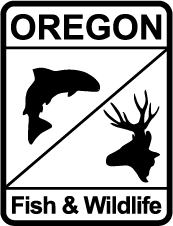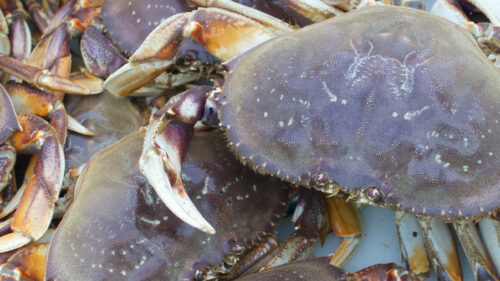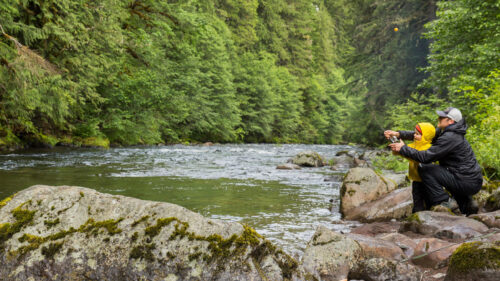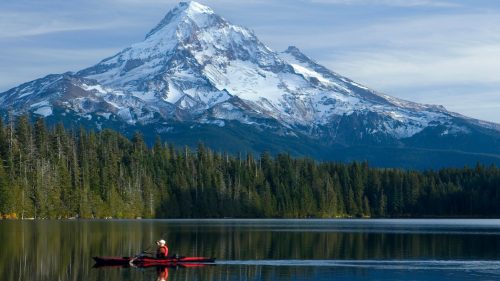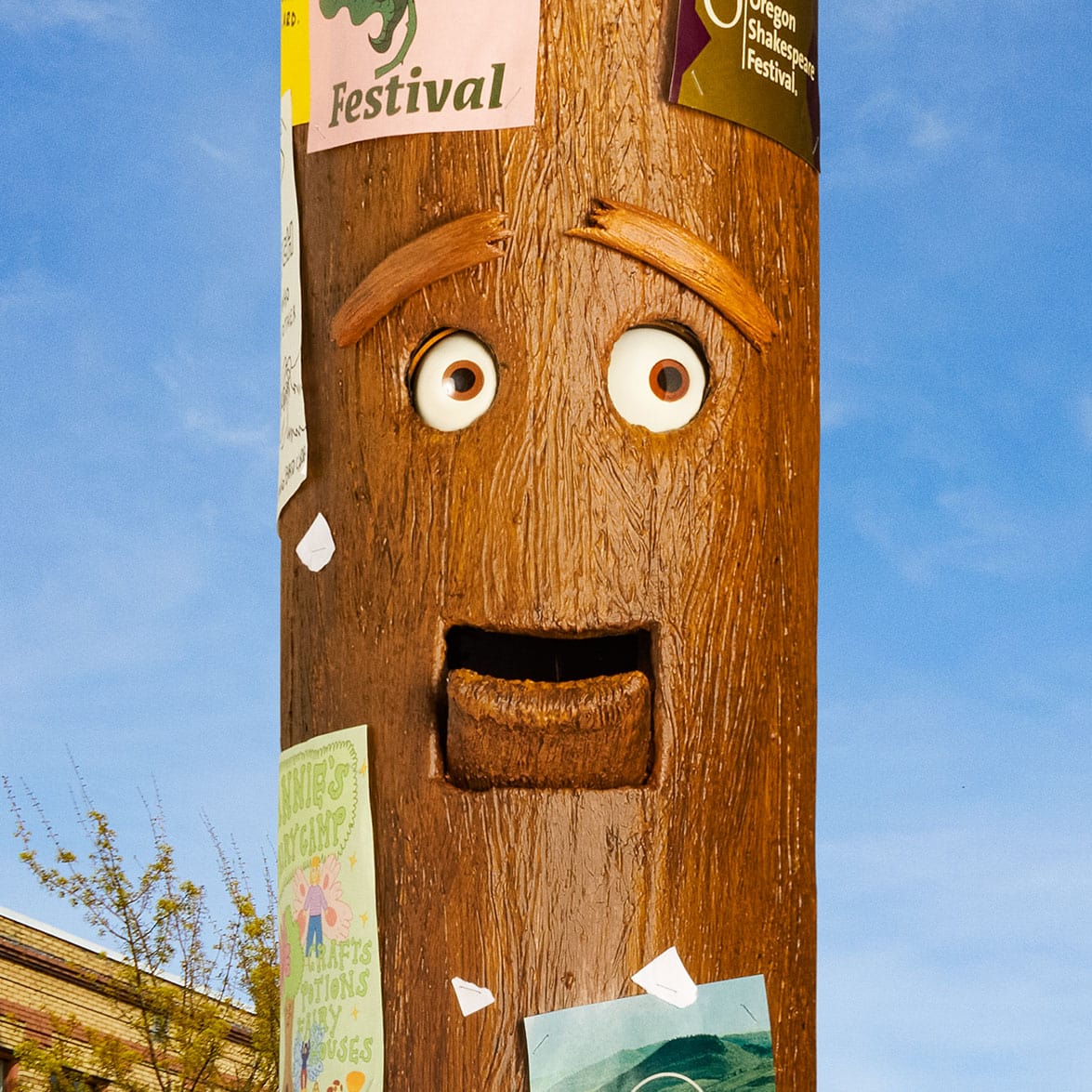Whether you’re a clam newbie or somebody who always travels with a shovel and a bucket in the trunk, it’s easy to dig your own on the Oregon Coast. The state’s 363 miles of coastline dish up accessible options for all levels of experience and enthusiasm. Read on to find out just what kind of clamming suits your speed and season. And before you head out, call the shellfish safety hotline at 800-448-2474 to be sure clamming is open in your area, along with the clams you’re targeting.
Even Impromptu Day-Trippers Can Find Purple Varnish Clams
No shovel or clam gun? No problem. If a last-minute day trip to Newport or Tillamook finds you with little more than a blanket and a beach bag, there’s still a perfect style of clamming for you. All you need are your hands and a bucket or bag.
Head to the tidal flats or sandy stretches of the bays in Nehalem, Tillamook or Waldport and simply start digging with your hands. Purple varnish clams live about 6 to 8 inches down and can be found in large numbers year-round with minimal effort in the mud and pebbles of Oregon bays.
How to Clean and Cook Purple Varnish Clams
Purple varnish clams need to be purged before they’re cooked. Simply soak them in a bucket of cold water for about 24 hours. To cook, bring an inch or two of salted water to a boil, add clams and wait for them to pop open, just about 20 to 30 seconds. They can also be steamed open in white wine. Eat them straight from the shell or add to chowders and pastas.
Softshell Clams Require a Little More Planning
If you take your clamming a little more seriously, you’ve probably packed your shovel and a dedicated clamming bucket. With those tools on hand, one of your best bets will be to hunt for softshell clams, a common species of bay clam that hunker about 12 to 18 inches down below the surface of the sand. They can be found in nearly every estuary in Oregon year-round, but some popular digging spots include Coos Bay, Necanicum Bay and Siletz Bay.
Look for dime-size holes in the sand known as the “show.” Then dig down gently next to the hole, not right over the top of it, to avoid breaking the shell. Once you find the clam, rinse it off, put it in your bucket and fill in your hole.
How to Clean and Cook Softshell Clams
Rinse softshell clams, then submerge them in boiling water for 20 to 30 seconds until the shell pops open. If the clams are small, you can eat them whole after removing the tough neck skin. If they’re large, you can gut them as well. Softshell clams are often best in chowders or as fritters.
Razors Are the Reward for Clam Connoisseurs
As of Nov. 3, 2022, razor clamming is closed coastwide due to elevated levels of domoic acid, a naturally occurring marine biotoxin. Razor clams are often slow to clear toxins from their tissues, especially at this time of year. Call the shellfish safety hotline at 800-448-2474 for updated information.
You’ve got the tide tables memorized and a favorite recipe for clam chowder queued up and ready to go. If you’re on a dedicated mission to find clams on the Coast, it’s hard to beat an outing for razor clams, a tasty, mild clam often used in chowders or served as fritters.
Largely concentrated along the ocean beaches of Clatsop County, razor clams can dig down deep and fast. They have a show similar to softshell clams. When you see that telltale hole in the sand — most frequently at minus-low tides — dig down gently but quickly with your shovel or clam gun to get the goods. And don’t give up: Razors have been found as far as 4 feet below the surface. Find more tips on razor clamming here. (Note razor clamming in Oregon is closed from July 15 to September 30 each year.)
How to Clean and Cook Razor Clams
It’s not hard to clean a razor clam, but a visual reference helps. Fortunately, ODFW has a helpful video that walks you through the process. They can be fried whole or in strips, or added to various dishes.
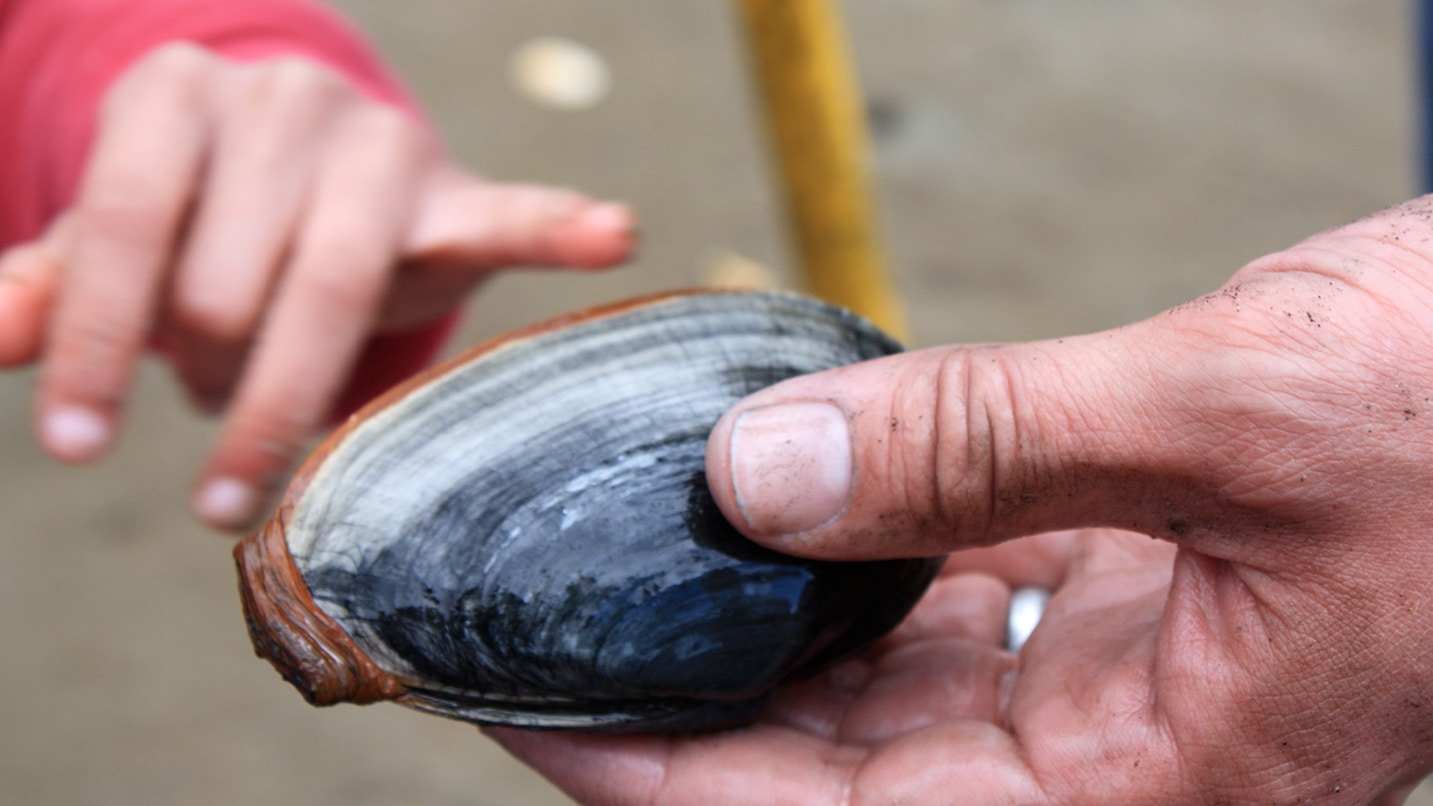
What You Need to Know
Clamming on the Oregon Coast is easy, fun and rewarding. However, there are still a few key pieces of information that any clammer needs to know before heading out.
- Licenses. No matter which clams you’re after, you need a license. They’re easy and affordable to get. Just head to MyODFW.com, where Oregon residents can buy adult and youth shellfish licenses for $10. (Adult nonresident licenses are $28.) Kids under 12 are free. You can also find licenses at various retailers around Oregon.
- Limits. Oregon sets limits on the number of clams you can take per day. A few examples: purple varnish clams, 72; bay clams, 20; razor clams, first 15 dug out. Always know and adhere to limits to ensure clams are there for the next generation.
- Look out. The Oregon Coast is beautiful, but it can also be unpredictable. Never turn your back to the ocean, know the weather and tides, and stay away from logs on the beach or in the surf.
- Make the call. Elevated levels of biotoxins can shut down clamming in certain areas of the Coast. Always call the Oregon Department of Agriculture hotline (800-448-2474) or visit their website to learn about any advisories.
